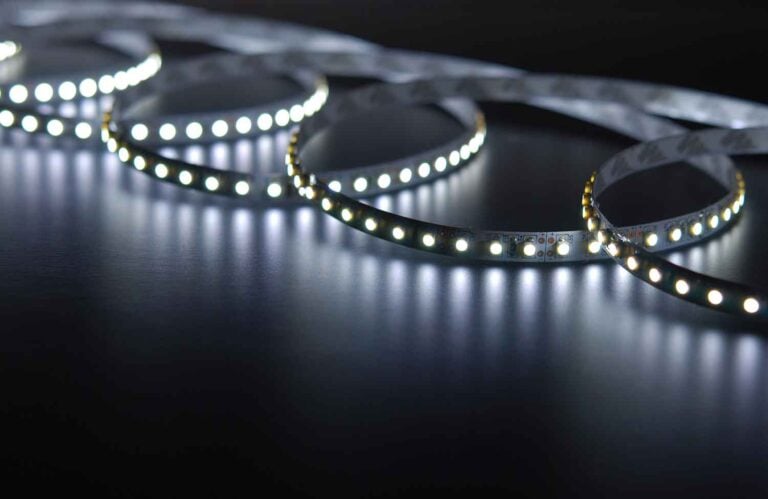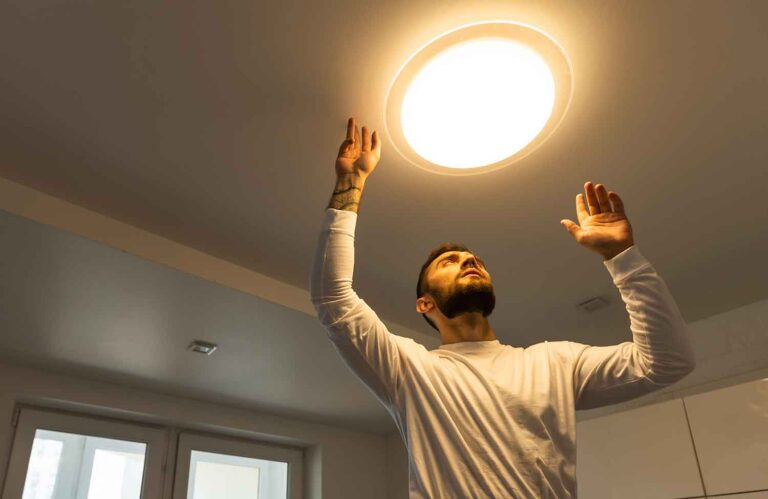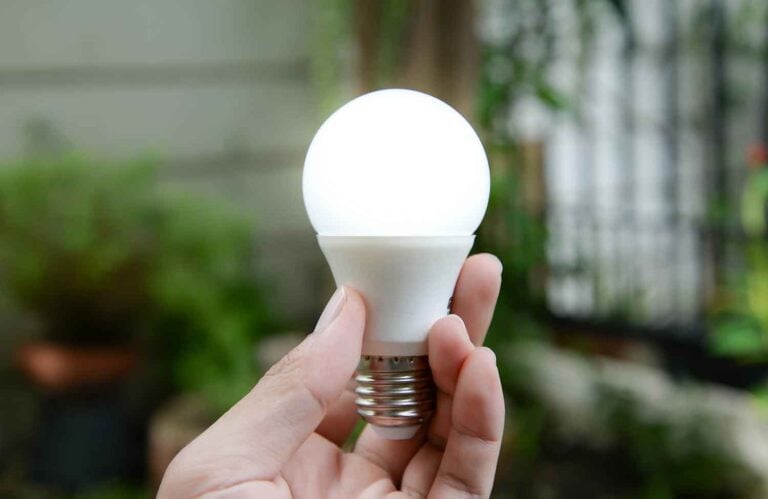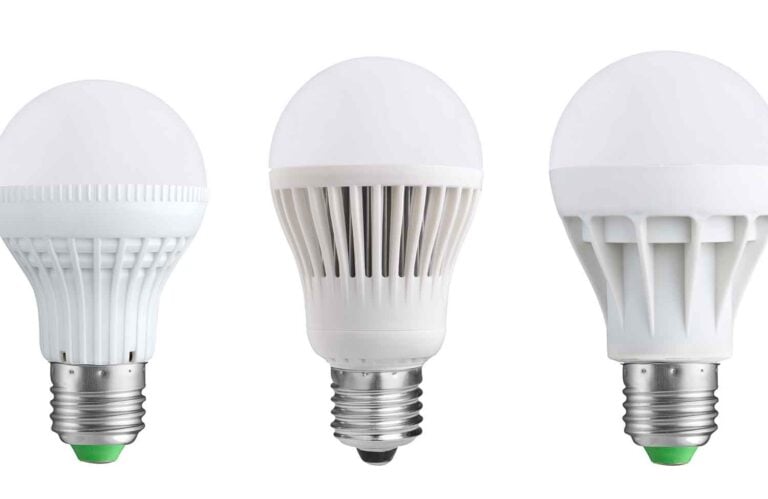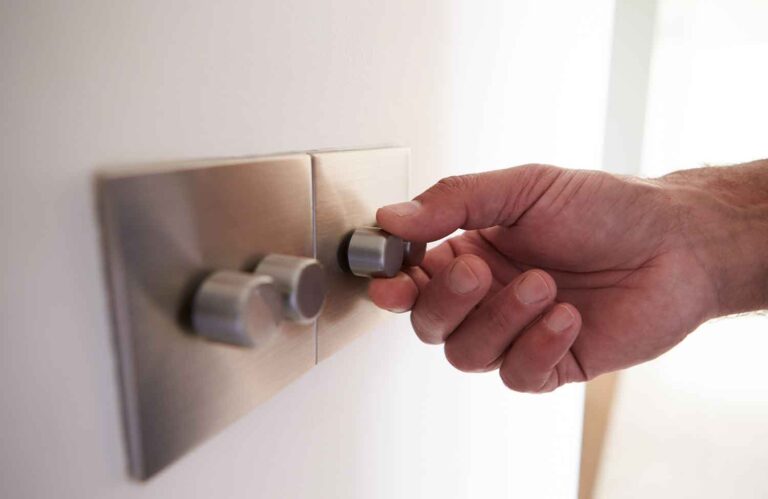Do LED Lights Burn Out: Understanding Their Lifespan and Durability
LED lights revolutionised the lighting industry with their energy efficiency and long-term cost savings. Contrary to traditional incandescent bulbs, LEDs don’t produce light through a filament that can easily break but through semiconductors that transform electricity directly into light. This technological advancement gives LEDs a remarkably longer lifespan.
Despite their durability and touted lifespan of up to 50,000 hours, LED lights can still ‘burn out’ or cease to function correctly. The term ‘burn out’ is somewhat of a misnomer when it comes to LED lights, as they typically fail through dimming over time or due to other malfunctions rather than burning out in the traditional sense. It’s important to understand that the reasons for LED failure are usually different from the causes of burnout in other types of lighting.
Key Takeaways
- LEDs are more energy-efficient and have a longer lifespan than traditional bulbs.
- ‘Burning out’ in LEDs typically involves dimming or malfunctioning rather than actual burning.
- Understanding LED technology and potential causes of failure can prevent premature burnout.
Fundamentals of LED Lighting
LED technology revolutionised energy-efficient lighting by merging longevity with low power consumption. Understanding how these lights operate and their expected lifespans guides your decision-making in lighting solutions.
How LED Lights Work
Your LED lights function quite differently from traditional incandescent bulbs. An LED, which stands for light-emitting diode, produces light when electric current passes through a microchip, illuminating tiny light sources called LEDs and resulting in visible light. To prevent performance issues, components like heat sinks disperse heat that could otherwise degrade the LED’s lifespan.
LED Lifespan Expectations
LED lights are designed for longevity, boasting lifespans that significantly exceed traditional lighting options. You can typically expect your LED lights to last between 25,000 to 50,000 hours, though factors like thermal management, electrical design, and ambient operating temperature may affect this. Although LEDs don’t ‘burn out’ in the traditional sense, they do dim over time, with an industry standard L70 rating indicating 70% brightness at the estimated lifespan threshold.
Causes of LED Burnout
LED lights, known for their longevity, do occasionally fail. Understanding the reasons for burnout helps you make informed decisions.
Thermal Stress
Your LED’s longevity is significantly impaired by heat, particularly when it’s not properly dissipated. LED bulbs contain heat sinks designed to manage this excess heat. When the heat sink is inefficient, perhaps due to poor fixture design, it leads to higher temperatures that shorten the lifespan of the bulb.
Electrical Overload
Voltage fluctuations can be devastating to LEDs. If your home’s voltage supply consistently exceeds the LED bulb’s recommended voltage, you risk overloading the bulb. Additionally, using an incompatible dimmer switch may cause unstable electrical input that overwhelms the LED’s circuitry.
Component Degradation
Over time, the individual components of LED bulbs can deteriorate. This degradation is often marked by a gradual fading of the light rather than a sudden failure. Quality plays a crucial role here; cheaper bulbs may use substandard materials that degrade faster than those found in higher-quality, usually more expensive, bulbs.
Preventing LED Failure
Ensuring the longevity of your LED lights hinges on correct installation and effective heat management, which can prevent premature failures.
Proper Installation
When installing LED bulbs, closely follow the manufacturer’s guidelines to avoid common mistakes that may lead to early failure. Ensure that your bulbs are compatible with existing fixtures and dimmer switches, as using an incompatible dimmer can cause your LED bulb to malfunction. Connections should be secure, but not overly tight, and the voltage rating of the bulb must match your home’s supply to prevent excess current from shortening its lifespan.
- Check Compatibility: Use bulbs that match the fixture’s designation.
- Secure Connections: Tighten connections reasonably, avoiding excessive force.
- Voltage Consideration: Use LEDs that align with your home’s voltage to prevent damage.
Heat Management
Excessive heat is detrimental to LED performance and lifespan. Here are specific steps to mitigate heat build-up:
- Choose the Right Fixture: Some fixtures, such as enclosed or recessed models, may have poor airflow, leading to heat accumulation. Opt for LED-compatible fixtures with good airflow.
- Monitor Ambient Temperature: Keep the ambient temperature around your LEDs within the range specified by the manufacturer. Avoid using LEDs in high-temperature areas unless they are rated for it.
- Inspect and Clear Vents: Regularly check for and remove any dust or debris blocking the light fixture’s vents to ensure proper air circulation.
By adhering to these practices, you can significantly enhance the durability and performance of your LED lighting.
Identifying and Addressing LED Burnout
LED lights are known for their longevity, but they can still encounter issues that may lead to what is commonly referred to as burnout. When issues arise, it’s important to recognise the signs and take appropriate action to troubleshoot and resolve them.
Signs of Burnout
- Dimming: Your LED should maintain a consistent level of brightness throughout its lifespan. If you notice a significant decrease in brightness, it may be a sign of burnout.
- Flickering: Occasional flickering can occur, but persistent or severe flickering might indicate a deeper issue.
- Discolouration: If the colour of the light changes or it emits a less vibrant light, the LED might be nearing the end of its working life.
- Non-Functioning LEDs: When an LED fails to turn on, and you’ve confirmed that the power source and connections are intact, the LED may have burnt out.
Troubleshooting Steps
- Check the Power Supply: Verify that the power source is stable and providing the correct voltage.
- Inspect for Visible Damage: Look for signs of damage on the LED itself, such as cracked lenses or damaged casings, which can contribute to burnout.
- Examine the Environment: LEDs are sensitive to high temperatures and moisture. Ensure that your LEDs are not placed in environments that could lead to overheating or water ingress.
- Test with a Different Fixture: If possible, test your LED in a different compatible fixture to determine if the problem lies with the LED or the original fixture.
- Review the Driver: The driver regulates the power to the LED. A faulty driver can lead to issues such as flickering and reduced brightness.
By staying aware of these signs and following the troubleshooting steps, you can address LED burnout efficiently and prolong the lifespan of your LEDs.

